Mastering Fire Fighting Foam: The Art of Fire Suppression
Introduction:
In this blog we shall discover the mysteries around firefighting foam and interest in its miraculous abilities to fight against the fire. Explore its chemistry and learn how stabilizers, foaming agents, and water work together to effectively battle various fire classes. It is most essential to have an accurate proportioning equipment to guarantee the best possible foam performance for each type of fire. Learn the art of applying foam strategically, preventing re-ignition with each application. However, despite its strength is worry about its effects on the environment, which leads to research into environmentally preferable substitutes. In this blog we shall discuss above advantages of movable foam units, which offer unparalleled adaptability, versatility and quick reaction times in times when emergency response is required. Foam’s revolutionary potential is demonstrated by real-world examples, such as containing infernos at tank farms and preventing grease fires in kitchens. Accept the adventure of deciphering the mysteries of different types of foam.
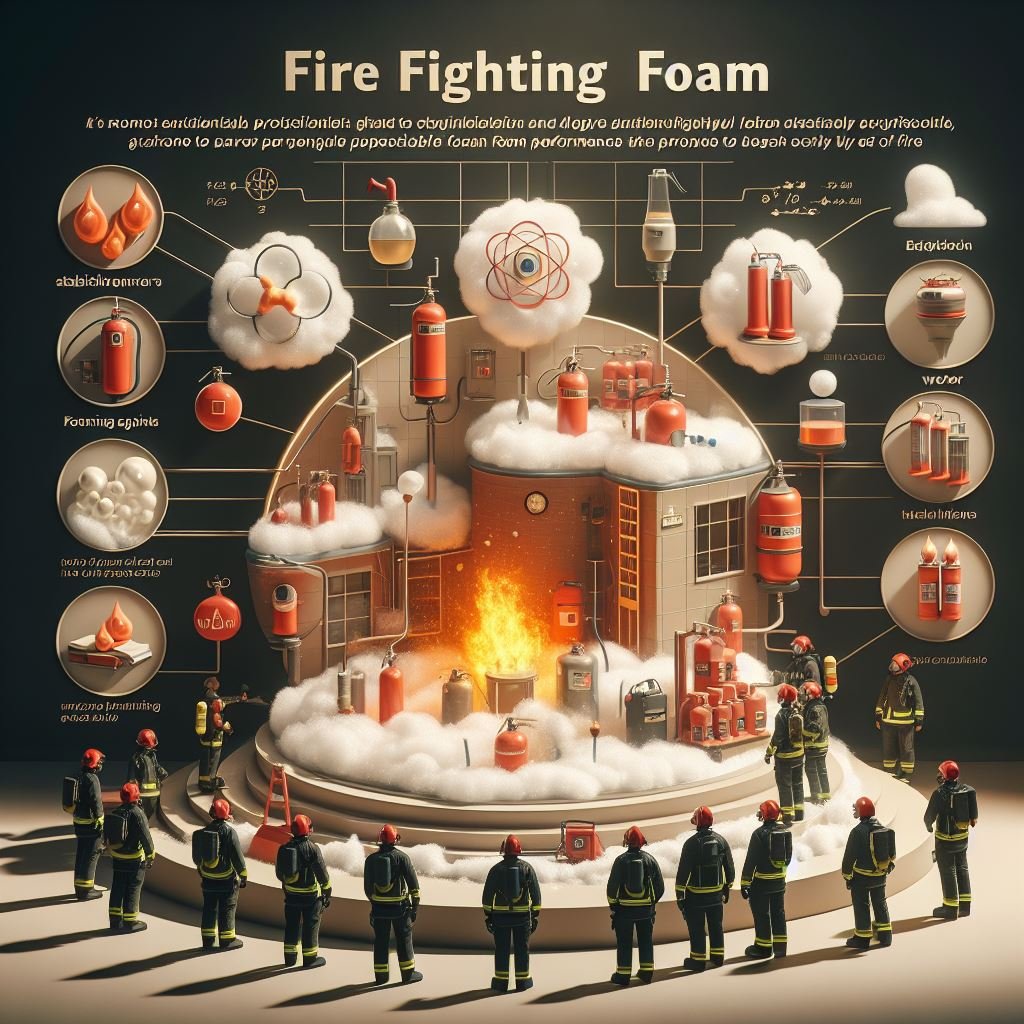
Understanding Fire Fighting Foam Composition:
Foam is very vital component in modern fire suppression techniques. Foam comprises a complex composition that is tailored to extinguish various types of fires effectively. Let’s understand the details of foam composition and understand its role in killing the fires.
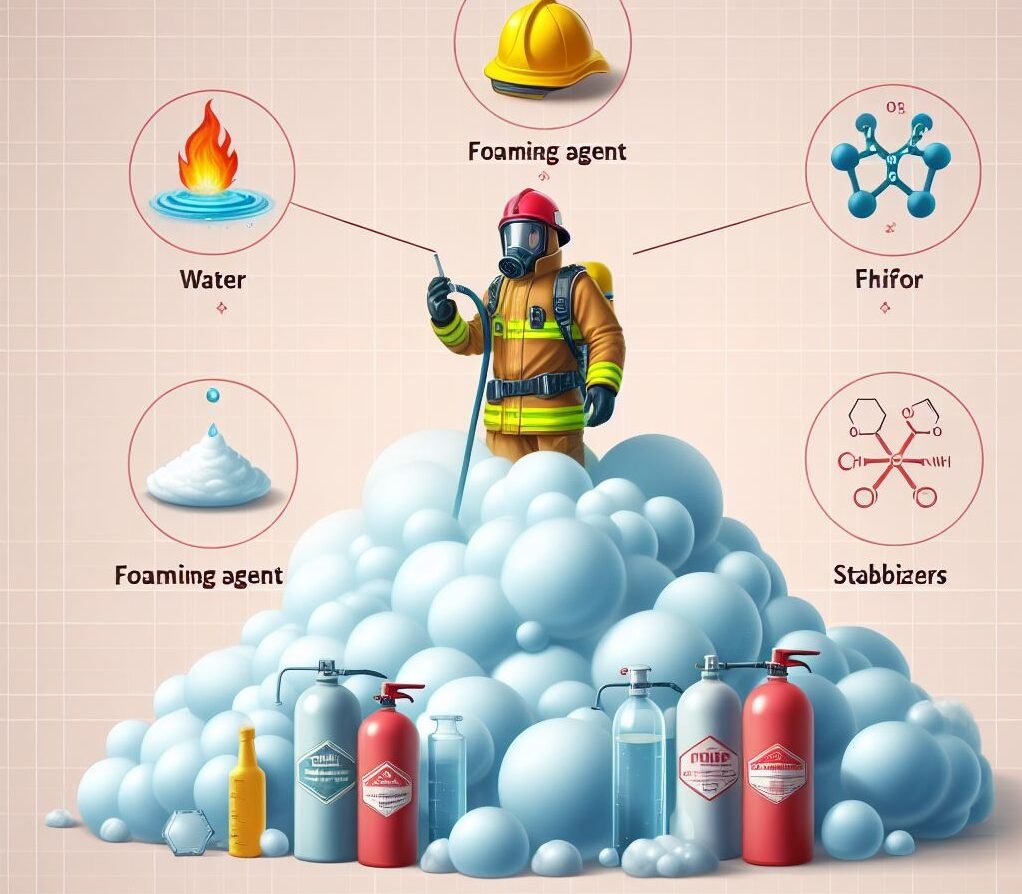
Major Chemical Components of Fire Fighting Foam:
There are mainly three chemical components of Foam:
- 1 Water
- 2 Foaming Agent
- 3 Stabilizers
Bubbles are formed due the foaming agent which in turn increases the surface area of the water to smother the fire cleanly and effectively. The foaming agent facilitates the formation of bubbles, increasing the surface area of water to smother the fire effectively. While Stabilizers acts as a strength providing agent which prevents premature breakup of the foam.
Types of Fire Fighting Foaming Agents required for different class of Fires:
Different types of fires require specific foaming agents for optimal suppression.
Key Takeaway
Remember these important insights as you continue reading.
Class A fires, involving ordinary combustibles like wood and paper, hence Class A fire requires foam having high wetting capabilities to penetrate porous materials effectively.
While in contrast, Class B fires, fueled by flammable liquids such as gasoline and oil, requires foaming agents capable of forming a stable blanket to suppress vapor release and prevent reignition.
Further details on different types of Foam can be learnt here.
Proportion and Concentration of AFFF Foams:
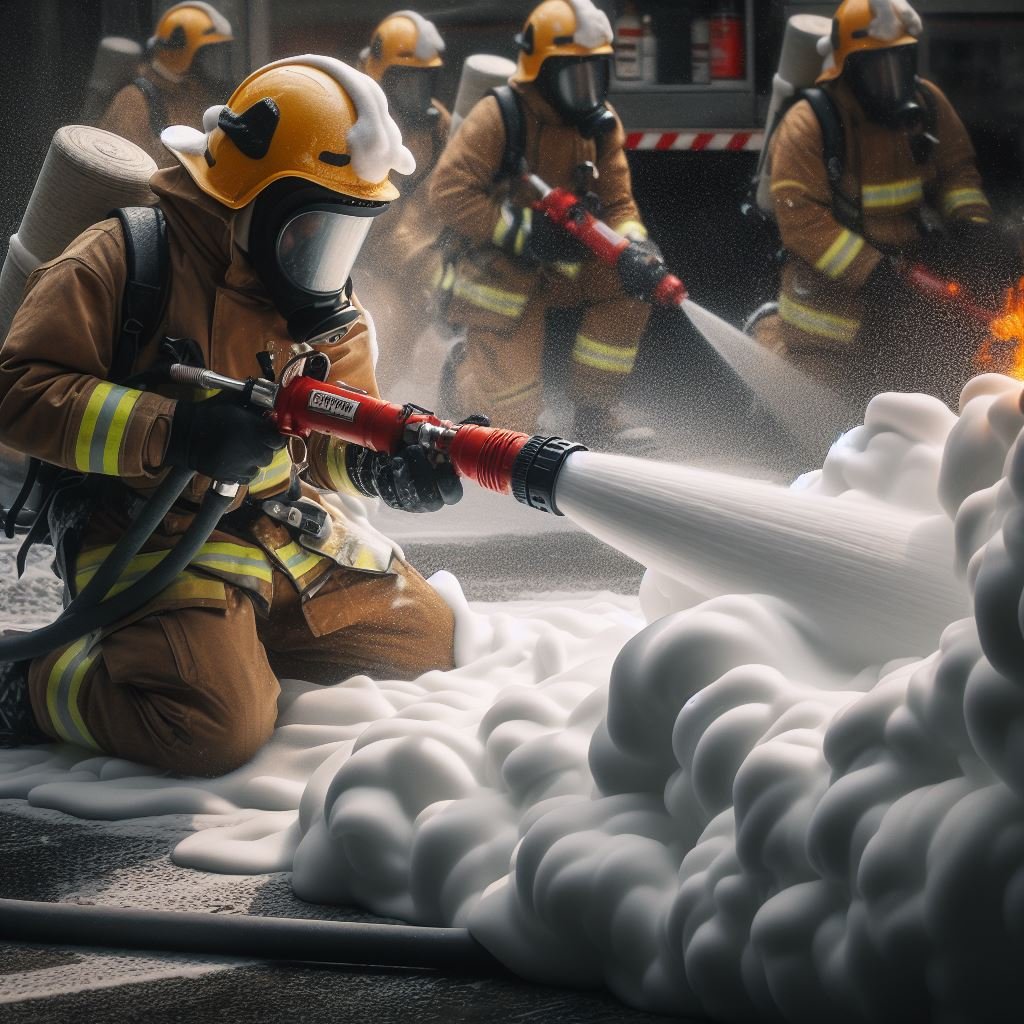
Achieving the right balance of ingredients is crucial for fire fighting foam’s effectiveness. The proportion of water to foaming agent varies depending on the fire’s class and the desired foam type—Low-Expansion Foam typically consists of 94% water and 6% concentrate, whereas High-Expansion Foam requires higher concentrate levels for increased expansion.
Low-expansion fire fighting foams, have an expansion ratio of less than or upto 20. This AFFF foams are of low-viscosity, mobile, and can quickly cover large areas.
-
✓
- Generally Low expansion foam is generated by Low expansion foam making branch pipes like FB 2x, FB 5x, FB 10x or FB 20x.
- Medium-expansion fire fighting foams can have expansion ratio ranging from 20 to 200
- ✓ Medium Expansion foam generators and medium expansion foam pourers ranging from 225 LPM to 1800 LPM are used to generate medium expansion foam.
- High-expansion fire fighting foams have an expansion ratio over 200 to 1000 and this High-Expansion foam are specifically where quick filling is required in places like hangars, where quick filling is needed.
- ✓ High Expansion foam generators are used to generate such a large volume of the foam to fill very large spaces in very short time.
How to Apply Fire Fighting Foam on Fire:
To apply the foam on any fire requires training, technique and skills. Applying fire fighting foam requires precision and understanding of the fire dynamics.
Firefighters utilize different application techniques based on the fire’s intensity, size, and fuel type.
Key Takeaway
Remember these important insights as you continue reading.
There are mainly three ways to apply the fire fighting foam on fire.
- 1 Banking,
- 2 Roll-on, and
- 3 Rain-down
Above are the most common methods used to spray foam efficiently to the fire’s base, forming a protective barrier that prevents re-ignition.
Various Foam Application Techniques on Fire:
We shall be elaborating each technique as follow:
Banking Method: A Gentle Touch
Banking is a method where firefighters graciously glide foam onto a fire? That’s the banking method in action. This method involves gently depositing foam onto the fire’s surface, creating a protective barrier without agitating the flames.
Roll-on Technique: Smooth Moves
Imagine rolling out dough, but instead, you’re rolling on foam to douse flames. With this technique, firefighters apply foam using smooth, controlled motions, ensuring even coverage to smother the fire effectively.
Rain-down Approach: Let Pour it.
Picture rain pouring from the heavens, except it’s foam quenching the inferno below. The rain-down technique involves releasing foam from above, allowing it to cascade down onto the fire, suffocating it from all angles.
Is Fire Fighting Foam Harmful to Environment? What is Effects of Foam on Environment:
Foam is highly effective in suppressing fires, but foam also has some impact on environment Traditional foaming agents containing fluorinated compounds pose environmental risks due to their persistence and potential toxicity. In response, eco-friendly alternatives such as fluorine-free foams are gaining popularity for their superior performance and reduced environmental footprint.
You can download a pdf on Environmental effects of Fire Fighting Foam.
How to Put Out Fire with Fire Fighting Foam:
You know different techniques to apply the foam on fire, but here are some bonus tips to ensure success:
- ✓ Practice Makes Perfect: We must not expect to master foam application overnight. It is the practice makes men better and better. Hence to sharpen your skills as a fire fighter and become a foam-spilling master.
- ✓ Stay Calm Under Pressure: In the heat of the moment (literally), keep a cool head. Panicking won’t help. Stay focused and execute your foam application techniques with confidence.
- ✓ Teamwork Makes the Dream Work: Fighting fires is a team effort. Coordinate with your fellow firefighters to ensure seamless foam application and maximize effectiveness.
- ✓ Adapt and Overcome: Every fire is unique. Be prepared to adapt your foam application techniques based on the fire’s intensity, size, and fuel type. Flexibility is key to success.
Advantages of Mobile Foam Units:
You’re about to discover why mobile foam units are the superheroes of fire suppression. Mobile Foam units are nothing but a kind of Mobile fire fighting foam storage tanks well equipped with various types of foam generating and fire fighting equipment. So Let’s dive in!
Key Takeaway
Remember these important insights as you continue reading.
You can read more on Mobile Foam Trolley Units or Mobile Foam Kart here.
Rapid Response: Be the Hero in Minutes
With a mobile foam unit at your disposal, you can swoop in and save the day at a moment’s notice. These units are designed for quick deployment, allowing you to tackle fires swiftly and prevent them from spreading.
Versatility: Flexibility at Your Fingertips
Mobile foam units are like Swiss army knives for firefighters. They’re versatile tools that can adapt to various firefighting scenarios, from tackling raging infernos to controlling minor flare-ups. With their compact size and manoeuvrability, they can navigate tight spaces and reach areas inaccessible to larger apparatus.
Enhanced Reach: Get Foam Where It’s Needed
When it comes to firefighting, every second counts. Mobile foam units provide firefighters with the ability to reach remote or hard-to-access areas quickly. Whether it’s a fire in a secluded forest or a confined space within a building, these units ensure that foam can be delivered precisely where it’s needed most.
Cost-Effectiveness: Save Money, Save Lives
Investing in mobile foam units can save both lives and money in the long run. By containing fires before they escalate, these units help minimize property damage and reduce the need for costly repairs. Additionally, their portability means they can be deployed strategically to maximize firefighting efficiency, ultimately saving resources and improving overall safety.
Eco-Friendly Solutions: Protecting the Planet
In today’s environmentally conscious world, mobile foam units offer a green solution to firefighting. Many units are equipped with environmentally friendly foaming agents that minimize harm to the ecosystem. By choosing mobile foam units, you’re not only fighting fires but also protecting the planet for future generations.
Case Studies: Effective Foam Deployment
So, you’ve mastered the science behind fire suppression foam. You know how it works, the different types, and the ideal application methods. But how does this knowledge translate to real-world scenarios? Buckle up, because this section dives into the thrilling world of case studies, showcasing how effective foam deployment can make all the difference in fire emergencies.
Key Takeaway
Remember these important insights as you continue reading.
Case Study 1: Taming the Tank Farm Inferno
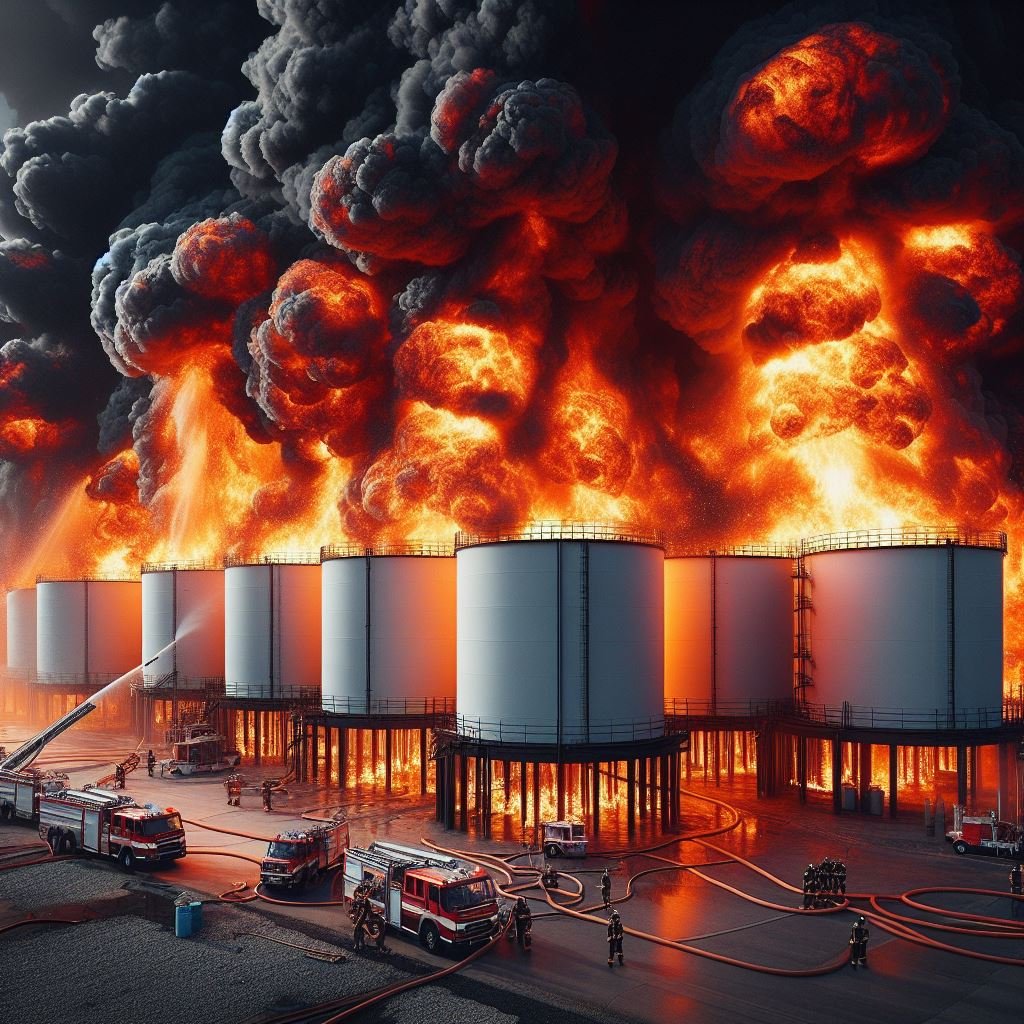
Imagine a scorching summer afternoon. A massive tank farm, storing flammable liquids, erupts in flames. The intense heat sends towering plumes of black smoke billowing into the sky. Firefighters on the scene are faced with a daunting task – containing the inferno before it engulfs the entire facility and risks a catastrophic explosion.
Here’s where fire suppression foam becomes a game-changer. Firefighters opt for a Class B foam concentrate, designed specifically for tackling flammable liquid fires. Using specialized nozzles, they create a foam blanket that smothers the flames, interrupting the oxygen supply and cooling the burning fuel. The foam blanket acts like a protective shield, preventing reignition and allowing firefighters to get closer to extinguish any lingering flames.
The result? A scorching inferno successfully brought under control. The foam blanket effectively confines the fire, preventing it from spreading to neighboring tanks and minimizing potential environmental damage. This case study highlights the critical role foam plays in safeguarding lives, property, and the environment during large-scale flammable liquid fires.
Case Study 2: THE KITCHEN FIRE SUPPRESSION WITH FIRE FIGHTING FOAM – From Grease Fire to Foam Fix
Kitchen in house, restaurant or at any place is one of the most hazardeous place if proper care is not taken up. Restaurant kitchens are full of Oil grease build up, which can ignite in a flash, posing a serious threat to staff and patrons.
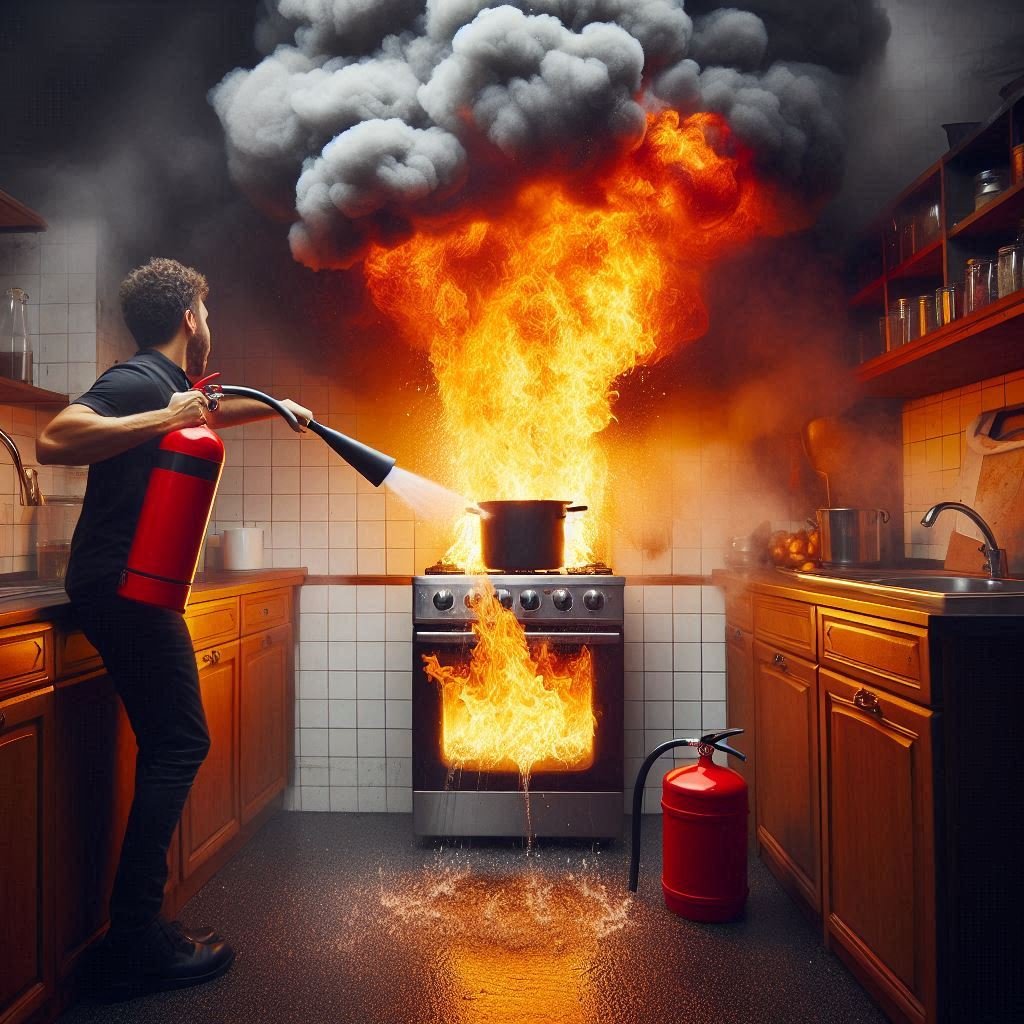
A deep fryer malfunctions, splashing hot oil which ignites surrounding surfaces. This creates panic as flames moves upwards, threatening to engulf the entire kitchen. The fire extinguisher might seem like the obvious choice, but for grease fires, water can actually spread the flames. Hence you need to use either ABC or Co2 Fire Extinguisher generally for Fire fighting.
This is where foam fire extinguishers come into picture. Kitchen staff, equipped with a user-friendly foam fire extinguisher, can quickly discharge a targeted foam stream. The foam clings grimly to the burning grease, smothering it and preventing the fire from escalating.
Key Takeaway
Remember these important insights as you continue reading.
The benefits of foam in this scenario is important. It extinguishes the fire rapidly, minimizing damage to kitchen equipment and preventing the blaze from spreading to other areas of the restaurant. Moreover, foam is less messy than water, getting cleaning process a easy turn out after the fire is under control. This case study emphasizes the importance of having handy and readily available foam fire extinguishers in high-risk environments like kitchens, empowering staff to take immediate action against grease fires.
Case Study 3: THE AIRPORT FIRE – WITH FIRE FIGHTING FOAM
Airports are one of the busiest spots. But even the most stringent safety measures can’t diminish the risk of an airplane fire. Jet fuel fires are incredibly flammable & dangerous, that requires a specialized approach to extinguish.

Imagine a plane that bursts into flames as it lands and skids off the runway, releasing a trail of flaming gasoline. A prompt and efficient reaction is necessary to avert a disastrous detonation.
Airport firefighters are equipped to handle these kinds of situations. Foam Trailers and Fire trucks are swiftly deployed .
In this case, high-expansion foam is utilized for fast filling of the space and spreading thick foam on the layer of the fire. High Expansion foam particularly has a unique property to quickly swell forming a blanket to put off burning gasoline and cool down the airplane body.
Time is essence for any fire and when it comes to the fire of Airports, this fire can rise from minor incident to major fire incident. Hence timely deployment of foam fire fighting equipment play important role to reduce the risk of loss.
Generally airport premises are being equipped with the Hi Expansion foam generators. This Hi expansion foam generators are used to generate thick blanket of the foam to spread over the fire. This case study underlines the essential role and importance of foam in ensuring the safety of air travel by reducing and mitigating the risks associated with airplane or gasoline fires.
Key Takeaway
Remember these important insights as you continue reading.
All above are few from the many examples on how foam can be effectively used to kill the fire and reducing risk of spreading the small fire to big fire.
Above are the few of the other examples of how foam can be effectively used to suppress the fire and reduce the risk of spreading the fire.
From large-scale industrial fires to everyday kitchen mishaps and aviation emergencies, fire fighting foam stands tall as a versatile and effective weapon in the fight against fire.
With the help of our in-depth guide various fire fighting equipment and fire fighting foam, you can improve your fire safety procedures. Whether you want to Purchase new any type of fire fighting equipment or fire fighting foam or you need maintenance or you need spares of fire fighting equipment, our professional advice will enable you to make the best choices. Our guide covers everything from maximise functionality and efficiency to comprehending various types and materials. Make sure you have the greatest Mobile Foam Units in your area for increased security, safety and comfort.
You can visit our website at www.kindefire.co.in / www.ithing-mtx.com / www.firefightingequipment.co.in.
We are exporting our Mobile Foam Trolley units in South Asian, Gulf and South Africa Countries. We are one of the leading manufacturer and exporters of Mobile Foam Trolley Unit, Fire Extinguisher Cabinet, Foam Equipment, Hydrant Stand Post and other fire fighting equipment, portable and fixed foam making equipment from India.
You can also email us your requirements on info@kindefire.co.in or Whatsapp us +91-8141899444.on Fire
Frequently Asked Questions on Fire Fighting Foam
FAQs:
1. Question: What are the major components of firefighting foam?
Answer: The major components are water, foaming agents, and stabilizers.
2. Question: What types of fires require specific foaming agents?
Answer: Class A fires involve ordinary combustibles, while Class B fires involve flammable liquids.
Key Takeaway
Remember these important insights as you continue reading.
3. Question: How do firefighters apply foam to fires?
Answer: Foam can be applied using banking, roll-on, or rain-down techniques.
4. Question: Is firefighting foam harmful to the environment?
Answer: Traditional foaming agents pose environmental risks, but eco-friendly alternatives are gaining popularity.
5. Question: What are the tips for effective foam application?
Answer: Tips include practicing, staying calm under pressure, teamwork, and adapting to each fire’s unique characteristics.
6. Question: What are the advantages of mobile foam units?
Answer: They offer rapid response, versatility, enhanced reach, cost-effectiveness, and eco-friendly solutions.
7. Question: How does foam deployment affect real-world scenarios?
Answer: Case studies illustrate foam’s effectiveness in scenarios such as tank farm fires, grease fires in kitchens, and aviation emergencies.
8. Question: What is the role of foam in suppressing flammable liquid fires?
Answer: Foam blankets smother flames, interrupt oxygen supply, and prevent reignition, minimizing potential environmental damage.
9. Question: How do foam fire extinguishers help in kitchen fires?
Answer: Foam extinguishes grease fires rapidly, minimizing equipment damage and reducing the risk of blaze spread.
10. Question: How does foam deployment enhance aviation safety?
Answer: High-expansion foam quickly blankets fires, preventing escalation and ensuring timely mitigation of airplane or gasoline fires.